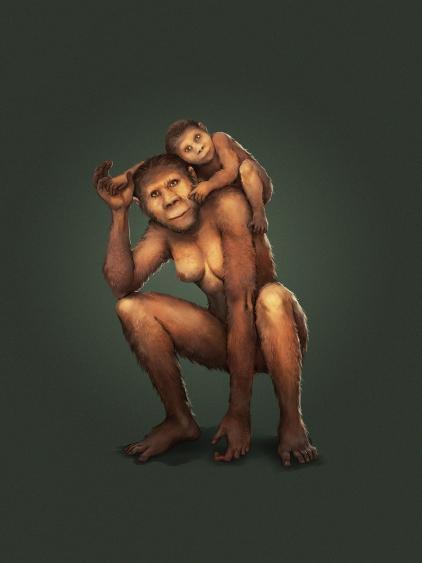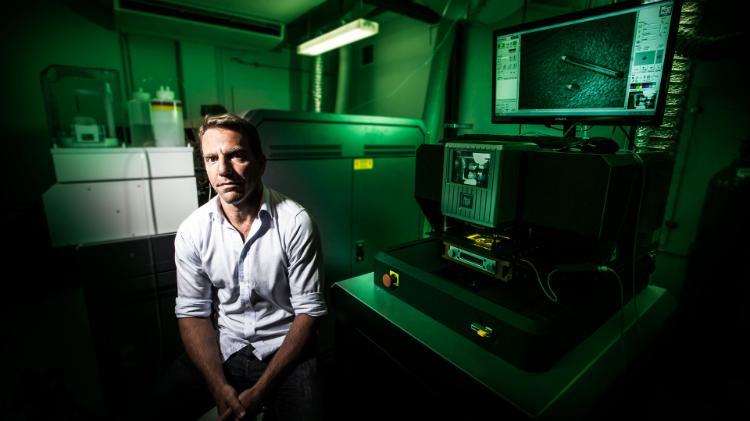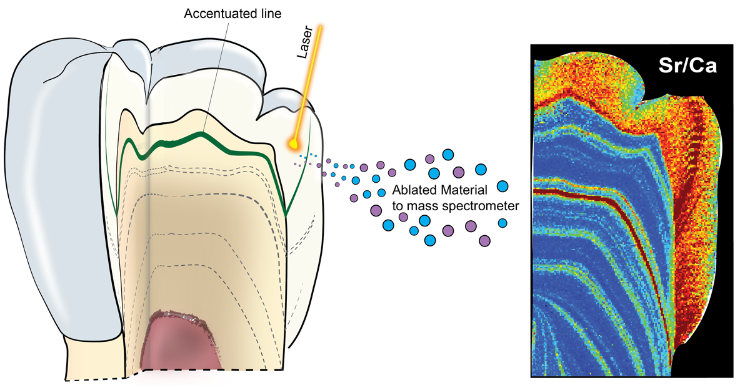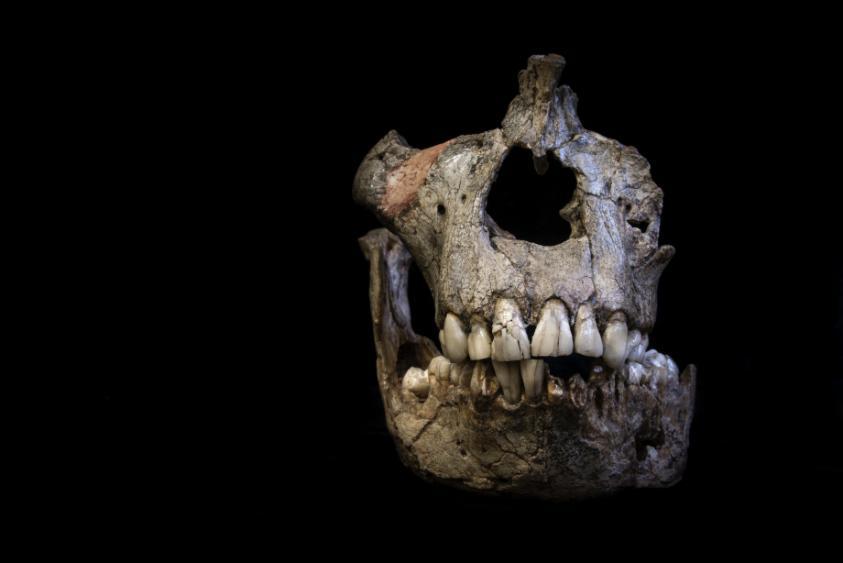July 16, 2019
Maternal secrets of our earliest ancestors unlocked
New insights into evolution of maternal roles and parenting responsibilities in one of our oldest evolutionary ancestors.
Key points:
- Australopithecus africanus mothers breastfed their infants for the first 12 months after birth, and continued to supplement their diets with breastmilk during periods of food shortage
- Tooth chemistry analyses enable scientists to ‘read’ teeth more than two-million-years-old
- Finding demonstrates why early human ancestors had fewer offspring and extended parenting role
Extended parental care is considered one of the hallmarks of human evolution. A stunning new research result published today in Nature reveals for the first time the parenting habits of one of our earliest extinct ancestors.
Analysis of teeth from Australopithecus africanus fossils found in South Africa, which are more than two-million-years-old, revealed that infants were breastfed continuously from birth to about one year of age. Nursing appears to continue in a cyclical pattern in the early years for infants; seasonal changes and food shortages caused the mother to supplement gathered foods with breastmilk.
An international research team led by Dr Renaud Joannes-Boyau of Southern Cross University, Dr Luca Fiorenza and Dr Justin W. Adams from Monash University, and including Associate Professor Anthony Dosseto from the University of Wollongong, published the details of their research into the species in Nature today.
“For the first time, we gained new insight into the way our ancestors raised their young, and how mothers had to supplement solid food intake with breastmilk when resources were scarce,” said geochemist Dr Joannes-Boyau from the Geoarchaeology and Archaeometry Research Group (GARG) at Southern Cross University.
“These finds suggest for the first time the existence of a long-lasting mother-infant bond in Australopithecus africanus. This is the first direct proof of maternal roles of one of our earliest ancestors and contributes to our understanding of the history of family dynamics and childhood,” said Dr Fiorenza, an expert in the evolution of human diet at the Monash Biomedicine Discovery Institute (BDI).
“Fundamentally, our discovery of a reliance by Australopithecus africanus mothers to provide nutritional supplementation for their offspring and use of fallback resources highlights the survival challenges that populations of early human ancestors faced in the past environments of South Africa,” said Dr Adams, an expert in hominin palaeoecology and South Africa sites at the Monash BDI.

Illustration of the mother-infant bond of Australopithecus africanus. Image: Garcia and Joannes-Boyau.
Professor Dosseto, an expert in geochemistry and Director of the Wollongong Isotope Geochronology Laboratory at UOW, said the study underlined how innovative scientific techniques were transforming archaeology.
“In the last couple of decades, archaeology and palaeo-anthropology in particular, have been revolutionised by borrowing techniques from physical sciences (for instance ancient DNA, geochronology, and here geochemistry),” he said.
“Over recent years, our understanding of human evolution has completely changed and our family tree is more diverse than we previously thought. As this work shows, we’re also able to get an insight into how our early ancestors lived. The success of their survival strategy is what’s allowing us to be here today to talk about it.”
For decades there has been speculation about how early ancestors raised their offspring. With this study, the research team has opened a new window into our enigmatic evolutionary history.
Australopithecus africanus lived from about two to three million years ago during a period of major climatic and ecological change in South Africa, and the species was characterised by a combination of human-like and retained ape-like traits.

Associate Professor Anthony Dosseto Director of the Wollongong Isotope Geochronology Laboratory at UOW. Photo: Paul Jones
While the first fossils of Australopithecus were found almost a century ago, scientists have only now been able to unlock the secrets of how they raised their young, using specialised laser sampling techniques to vaporise microscopic portions on the surface of the tooth.
The gas containing the sample is then analysed for chemical signatures with a mass spectrometer– enabling researchers to develop microscopic geochemical maps which can tell the story of the diet and health of an individual over time.
Teeth grow similarly to trees; they form by adding layer after layer of enamel and dentine tissues every day. Thus, teeth are particularly valuable for reconstructing the biological events occurring during the early period of life of an individual, simply because they preserve precise temporal changes and chemical records of key elements incorporated in the food we eat.
By developing micro geochemical maps, we are able to ‘read’ successive bands of daily signal in teeth, which provide insights into food consumption and stages of life.

Laser ablation for geochemical mapping of fossil teeth. Image: Renaud Joannes-Boyau
Professor Dosseto analysed strontium isotopes in the teeth at the Wollongong Isotope Geochronology Laboratory.
“The study shows a cycle in diet, where Australopithecus africanus mothers would regularly have to breastfeed their young due to poor food availability in the landscape,” Professor Dosseto said. “My contribution was to provide the strontium isotope data that explains this scarcity in resources.
“Strontium isotopes in teeth can be used to track migrations. You are what you eat, so if you ate food coming from a soil developed over a granite, the strontium isotopes in your teeth would be different than if your food came from a soil developed over a basalt – granite and basalt are two very different types of rocks.
“Our strontium isotope data showed that these Australopithecus africanus stayed in the same area, which has a poor food availability. Why didn’t they go somewhere else? That’s another question. It probably wasn’t as easy as catching an Uber to Woolies, back then.”
Dr Joannes-Boyau conducted the analyses at the Geoarchaeology and Archaeometry Research Group at Southern Cross University in Lismore NSW and at the Icahn School of Medicine at Mount Sinai in New York.
“We can tell from the repetitive bands that appear as the tooth developed that the fall-back food was high in lithium, which is believed to be a mechanism to reduce protein deficiency in infants more prone to adverse effect during growth periods,” Dr Joannes-Boyau said.
“This likely reduced the potential number of offspring because of the length of time infants relied on a supply of breastmilk. The strong bond between mothers and offspring for a number of years has implications for group dynamics, the social structure of the species, relationships between mother and infant and the priority that had to be placed on maintaining access to reliable food supplies,” he said.
The team will now work on species that have evolved since, to develop the first comprehensive record of how infants were raised throughout history.
ABOUT THE STUDY
The paper ‘Elemental signatures in Australopithecus africanus teeth reveal seasonal dietary stress’ by Renaud Joannes-Boyau, Justin W. Adams, Christine Austin, Manish Arora, Ian Moffat, Andy I. R. Herries, Matthew P. Tonge, Stefano Benazzi, Alistair R. Evans, Ottmar Kullmer, Stephen Wroe, Anthony Dosseto and Luca Fiorenza. is published in Nature.
